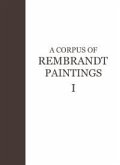The physics and materials science behind paintings: the pigments, binders, canvas, and varnish that go into making a painting appear the way it does. The text discusses the physical principles behind the colors seen and how these change with illumination, the various types of paint and binders used in both old and modern paintings, and the optics and microscopic structure of paint films. Chapters on dating, binders, and dendochronology have been contributed by experts in the respective fields.
Dieser Download kann aus rechtlichen Gründen nur mit Rechnungsadresse in A, B, BG, CY, CZ, D, DK, EW, E, FIN, F, GR, HR, H, IRL, I, LT, L, LR, M, NL, PL, P, R, S, SLO, SK ausgeliefert werden.
"In this respect the book by W Stanley Taft and James W Mayer is quite successful. Besides constituting a good and comprehensive introduction to the science of materials involved in a painting and to the processes through which a painting is made, which is of interest to those concerned with conservation and restoration of art objects, it is also an intriguing reading for everyone interested in gaining insight into the making of paintings and curious about the mechanisms of their perception by the viewer. The book starts with a systematic analysis of the materials used for making a painting: The book is well written. Apart from some of the appendices (where, however, mathematics has been conveniently limited) all the technical stuff is well balanced throughout the text, and its reading is never boring. All scientists involved in the conservation and restoration of paintings, especially those needing an introduction to the physics behind these topics, will enjoy reading this book." --Measurement Science and Technology









